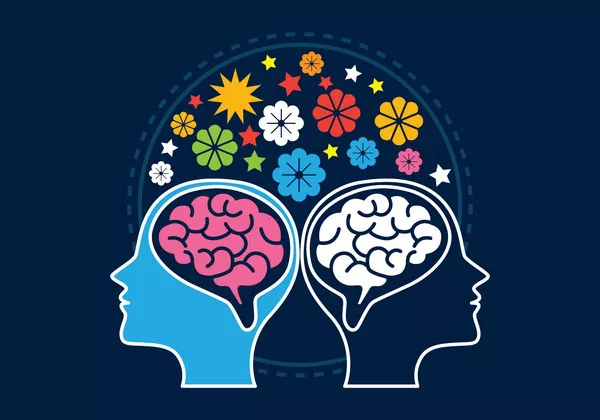Seasonal depression, also known as Seasonal Affective Disorder (SAD), is a subtype of depression that follows a seasonal pattern, typically occurring during the fall and winter months. While many people experience mood changes with the seasons, for some, the impact is more profound, affecting their daily lives and well-being. In this in-depth exploration, we delve into the multifaceted factors that contribute to seasonal depression, shedding light on the biological, environmental, and psychological elements at play.
Understanding Seasonal Depression
Before dissecting the causes, it’s essential to comprehend the characteristics of seasonal depression:
Seasonal Pattern: SAD follows a consistent seasonal pattern, with symptoms typically emerging in the fall or winter and improving in the spring or summer.
Common Symptoms: Symptoms of seasonal depression mirror those of major depressive disorder and may include low energy, persistent sadness, changes in sleep patterns, and a diminished interest in activities.
Geographical Variations: The prevalence of SAD is often higher in regions with pronounced seasonal changes, where reduced sunlight during the colder months is more significant.
Biological Factors
1. Circadian Rhythm Disruption:
Impact of Reduced Sunlight: The decrease in natural sunlight during fall and winter can disrupt the body’s internal clock (circadian rhythm), influencing sleep-wake cycles and mood regulation.
Melatonin Production: Reduced exposure to sunlight can lead to increased melatonin production, contributing to feelings of lethargy and drowsiness.
2. Serotonin Levels:
Sunlight and Serotonin: Sunlight exposure stimulates serotonin production, a neurotransmitter associated with mood regulation. Decreased sunlight may result in lower serotonin levels, contributing to depressive symptoms.
3. Melatonin and Sleep Patterns:
Role of Melatonin: Longer periods of darkness in the winter can lead to elevated melatonin levels, impacting sleep patterns and potentially exacerbating feelings of fatigue and sadness.
Environmental Factors
4. Reduced Sunlight Exposure:
Impact on Vitamin D: Limited sunlight exposure reduces the body’s ability to produce vitamin D, which plays a role in mood regulation. Vitamin D deficiency has been linked to an increased risk of depression.
Sunlight and Eye Health: Sunlight exposure to the eyes triggers the release of serotonin and helps regulate the body’s internal clock. Reduced exposure may disrupt these processes.
5. Temperature and Physical Activity:
Influence on Activity Levels: Cold temperatures and inclement weather can discourage outdoor activities and exercise, which are crucial for mental well-being.
Impact on Motivation: Reduced physical activity can contribute to a decline in mood and motivation.
6. Social Isolation:
Winter Social Withdrawal: The winter season may lead to increased social isolation, as people are less inclined to engage in outdoor social activities.
Impact on Mental Health: Social withdrawal can contribute to feelings of loneliness and exacerbate depressive symptoms.
Psychological Factors
7. Negative Thought Patterns:
Cognitive Impact of Seasonal Changes: Seasonal changes may trigger negative thought patterns and perceptions, influencing overall mood.
Coping Strategies: Individuals may employ less effective coping strategies during the darker months, contributing to heightened stress levels.
8. Personal History of Depression:
Vulnerability: Individuals with a history of depression may be more susceptible to seasonal changes affecting their mood.
Impact of Stressors: Seasonal stressors can compound pre-existing vulnerabilities, leading to the onset or exacerbation of depressive symptoms.
9. Genetic Predisposition:
Familial Patterns: There is evidence suggesting a genetic component to seasonal depression. Individuals with a family history of depressive disorders may be more prone to developing SAD.
Interplay of Genetics and Environment: Genetic factors interact with environmental influences, contributing to the complex etiology of seasonal depression.
See Also: 3 Nutritional Deficiencies Cause Seasonal Affective Disorder
Coping Strategies and Treatment Options
Understanding the causes of seasonal depression lays the foundation for effective coping strategies and treatment interventions:
1. Light Therapy (Phototherapy):
Mimicking Natural Sunlight: Light therapy involves exposure to a bright light that mimics natural sunlight, helping regulate circadian rhythms and serotonin levels.
Consistent Usage: Regular and consistent use of light therapy can alleviate depressive symptoms for many individuals.
Vitamin D Supplementation:
Addressing Deficiencies: For those with vitamin D deficiencies, supplementation can be beneficial. Consultation with a healthcare professional is crucial for determining appropriate dosage.
2. Psychotherapy:
Cognitive Behavioral Therapy (CBT): CBT can help individuals identify and modify negative thought patterns associatedwith seasonal depression.
Supportive Counseling: Seeking support through counseling provides a space to explore and address emotional challenges.
3. Medication:
Antidepressants: In some cases, healthcare providers may prescribe antidepressant medications to manage symptoms. It’s essential to discuss potential side effects and benefits with a qualified professional.
4. Lifestyle Adjustments:
Physical Activity: Regular exercise, even in colder weather, can significantly impact mood and energy levels.
Social Engagement: Actively seeking social connections and engaging in enjoyable activities can combat social isolation.
5. Mindfulness and Stress Reduction:
Mind-Body Practices: Incorporating mindfulness, meditation, and stress-reduction techniques into daily routines can enhance emotional well-being.
Seeking Professional Guidance
Individuals experiencing seasonal depression should seek professional guidance to determine the most appropriate interventions for their specific needs. A healthcare provider, mental health professional, or psychiatrist can conduct a thorough assessment and collaborate on a tailored treatment plan.
Conclusion
Seasonal depression is a complex interplay of biological, environmental, and psychological factors. Acknowledging the causes allows individuals to proactively address symptoms and explore effective coping mechanisms. From light therapy to lifestyle adjustments, the journey towards managing seasonal depression involves a multifaceted approach, emphasizing the importance of holistic well-being and individualized care.


